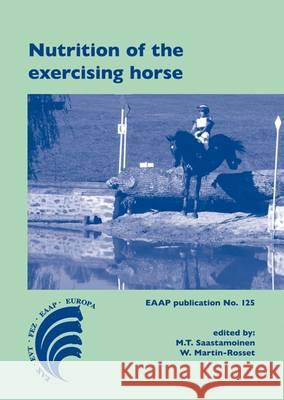Nutrition of the Exercising Horse » książka
Nutrition of the Exercising Horse
ISBN-13: 9789086860715 / Angielski / Twarda / 2008 / 432 str.
The exercising horse competes at various levels in different disciplines and is also increasingly used for leisure riding and driving as well as hobby farming and agritourism. This varied use of the horse of today creates challenges for those who are responsible for the feeding of horses, as well as to feed producers and manufacturers. This book provides an outstanding synthesis of knowledge in physiology and metabolism, nutritional requirements and feeding strategies. Use of performance aids and the question of feed contaminants and doping are explained and discussed according to EU legislation on the marketing and use of animal feeds and doping rules in horse sports. The improved knowledge and understanding of the background of the horse's performance and nutritional physiology helps to meet the nutritional requirements of working (or exercising) horses such that their genetic potential can be used properly.This book discusses the following seven subjects: nutrients and tissue metabolism; adaptations; energy requirements; protein requirements; mineral, electrolytes and vitamins requirements and function; feeding strategies; and, performance aids and feed contaminants and doping. This book is the fourth step of further discussion on the evaluation and prediction of the requirements of different types of horses covered in the scope of the working group Nutrition of the Horse commission at European Association of Animal Production (EAAP). All those concerned by racing, riding and feeding in equine industry will enjoy this valuable resource. It is a reference book for scientists, veterinarians, advisers and practioneers in the equine industry, as well as for teachers and students in equine science.











